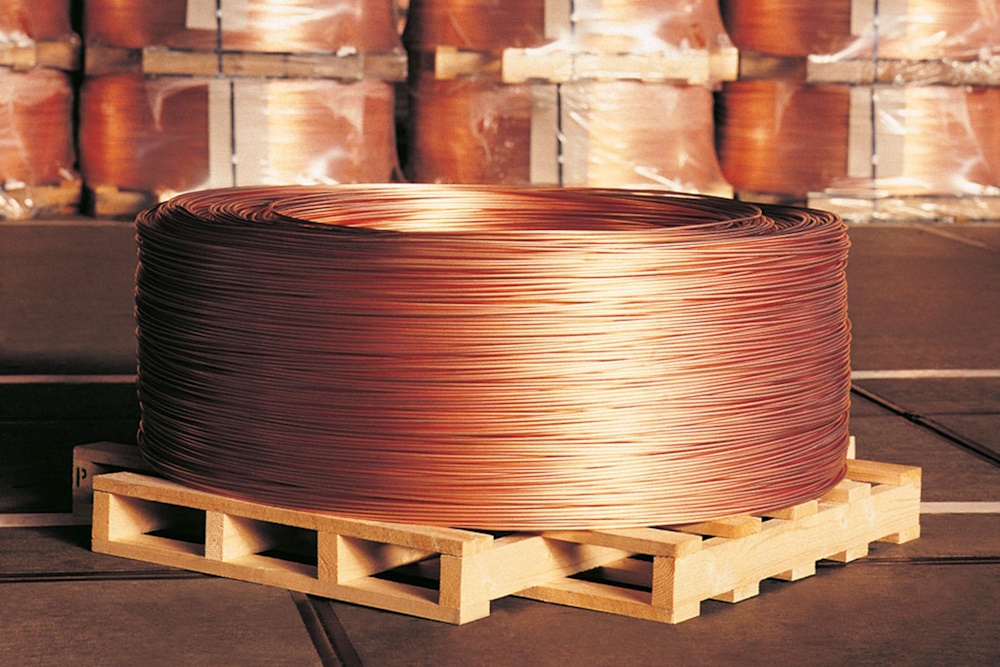
Copper continues to play a pivotal role in the global green transition, as demand experiences a significant surge in Asia, particularly in China and India. As electrification and electric vehicles propel consumption, supply limitations stemming from aging mines, environmental regulations, and geopolitical challenges could exacerbate future shortages. Despite near-term volatility, long-term market sentiment remains optimistic. Copper, frequently referred to as the “metal of electrification,” plays a central role in the worldwide shift towards a more sustainable and interconnected future. In 2025, the copper market is characterized by a complex interplay of rising demand, constrained supply, and geopolitical uncertainty, resulting in a volatile yet opportunity-rich landscape.
Global copper demand is anticipated to increase by around 2% in 2025, maintaining a consistent upward trajectory fueled by the growth of renewable energy, electric vehicles (EVs), and digital infrastructure. Asia—especially China and India—represents almost 74% of worldwide copper consumption, driven by urbanization, industrial expansion, and investments in clean energy. By 2025, China is projected to represent more than 50% of worldwide copper consumption. This significant proportion indicates that even slight changes in Chinese demand or supply can create waves throughout global markets. Whether it’s a surge in infrastructure spending or a slowdown in real estate, the global community observes China’s copper maneuvers with keen interest.
Multiple elements are driving China’s resurgence in copper demand. An important factor is the substantial government-led investments following the pandemic in green energy, transportation, and housing, which are intensive in copper. China’s EV production is gaining momentum, with copper serving as a crucial element in batteries and wiring. The observed trends have resulted in a notable increase in copper imports, constraining global supply and driving prices higher.
Interestingly, China is not merely a consumer; it also stands out as a significant refiner and recycler of copper. In scenarios where domestic smelting capacity faces limitations or environmental regulations become more stringent, China tends to boost its imports of refined copper, thereby exacerbating pressures on global supply chains. On the other hand, when China increases its domestic production or taps into strategic reserves, it has the potential to temper global prices. This dual role bestows upon China a significant influence over both ends of the copper trade.
Furthermore, the demand for copper in North America is projected to experience modest growth, with a forecasted increase of 3.1% by 2025. This growth is attributed to heightened investment in grid hardening, solar and wind power, as well as data centres. Demand from Europe is projected to increase by 1.2%, although it remains largely stagnant owing to economic uncertainty and elevated interest rates. Despite these gains, certain sectors such as construction and electric vehicles have exhibited indications of deceleration, particularly in established markets, which has moderated the overall demand acceleration.
As demand escalates, the supply side faces challenges in maintaining equilibrium. A multitude of factors is leading to a constriction in copper supply. Global copper mine production is projected to reach a peak of 23.5 million tons in 2025–2026. However, thereafter, a decline in production is anticipated due to diminishing ore grades, the aging of mines, and constraints on new project development. Resource nationalism, trade restrictions, and labour unrest in pivotal producing nations such as Chile and Peru are causing significant disruptions to supply chains. Moreover, more stringent environmental regulations are causing delays or stoppages in new mining initiatives, particularly in areas characterized by significant ecological sensitivity.
Looking ahead, in 2025, copper finds itself at a crucial crossroads. As demand persists in its upward trajectory fueled by electrification and green energy initiatives, the constraints on supply present a notable obstacle. In light of the increasing supply-demand imbalance, the global copper market is likely to encounter considerable deficits unless new sources of supply are established. On the price side, the short-term trend continues to exhibit volatility, shaped by macroeconomic factors including inflation, interest rates, and currency fluctuations. Nonetheless, the long-term outlook continues to be optimistic, driven by positive demand expectations from developing nations and a potential decrease in production.
